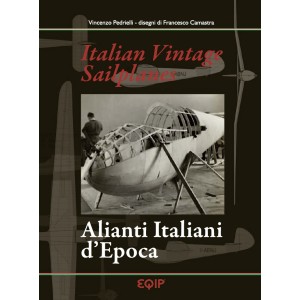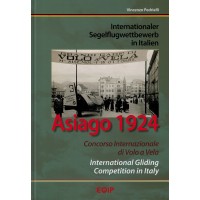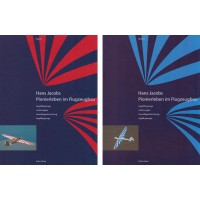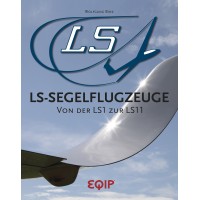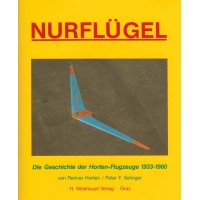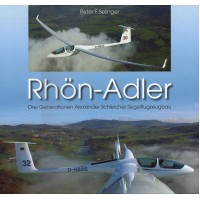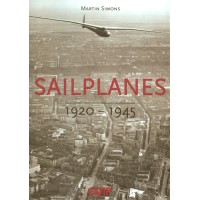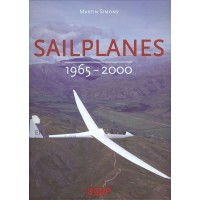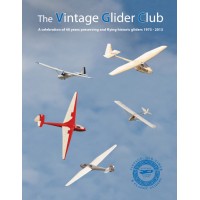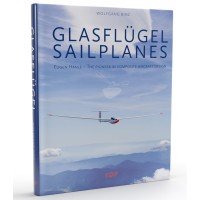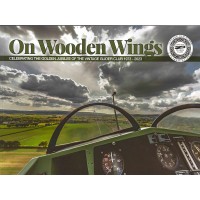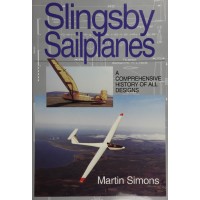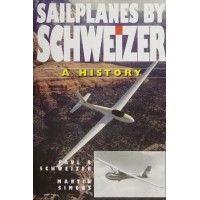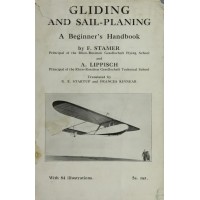Italian Vintage Sailplanes
Author: Vincenzo Pedrielli
Illustrations by: Francesco Camastra
Hard Cover, 272 pages, 90 full page 3-view drawings, hundreds of black and white and many color photographs, Copyright 2011
Dimensions: 8.7 x 11.8 x 0.79 inches (220 x 300 x 20 mm)
Language: Both Italian and English
No Longer Available Here
Overview
The history of Italian gliding from the beginning in 1924 in Asagio up to the recent past. All Italian designs and their patterns are described in detail with many excellent photos shown. Accurate 3-view scale drawings and an appendix with profiles and cross sections give the fuselage scale model builder all the necessary information.
From the Back Cover
This volume of 272 pages, is the result of meticulous research lasting a few years, carried out by Vincenzo Pedrielli. It includes notes rich in historical information and drawings from the beginning of gliding in Italy and its growth in the past century.
The book covers the development of Italian gliding from its birth on, through designers and builders, fuselages and sections, up to the technical description of each individual sailplane, skillfully drawn in the same scale by friend Francesco Camastra and supported by a wide array of photographic documentation.
A silent flight through two wars, by young minds, full of passion and fantasy, who established the glory of Italian Gliding.
Preface by Martin Simons
This beautiful book is an important contribution to the history of soaring in Italy. It fills a gap in the literature of this subject, drawing favorable attention to the work of Italian sailplane designers, constructors and pilots.
In the English speaking world little has been known of them hitherto. Here is the climax of years of careful study and research by Vincenzo Pedrielli, the author.
It will become recognized as essential for anyone who is fascinated by the story of the Italian gliding movement as it paralleled the extraordinary worldwide growth of this sport.
It is clear now that designers such as Luigi Teichfuss, whose aircraft for the first time are fully described here, and other engineers such as those of the Aeronautica Lombarda and the students of the Milan Polytechnic, made important contributions before 1939.
The Morelli brothers at the Gliding Centre of the Polytechnic of Torino, founded in 1952, and Edgardo Ciani with his extraordinary Spillo of 1954 and later designs, were fully up to date or even ahead of their contemporaries in other European countries, Japan and the Americas. Italian sailplane designers are now getting the recognition they fully deserve. It is impossible now to see these splendid, and sometimes not quite so splendid, aircraft flying, nor can pilots hope to climb into their cockpits and take off. They can, however, be flown in smaller form. Francesco Camastra’s accurate drawings and the photographs included will be an invaluable resource for model makers who until now have had very little access to detailed information of this kind.
Vincenzo and Francesco, thank you!
Martin Simon
Introduction to "Fuselages and Sections" section of the book
A model builder’s target is to build a replica that is as exact an image of the original as possible, right down to the smallest detail, except for the size.
These drawings, showing the fuselage cross sections of gliders designed up to 1940, might be useful for building a good scale model. I remind the reader that the drawings marked with the letter “A”, come from original plans, while the others have been carried out from approximate 3-View-drawings or even from just photographs. The dimensions are expressed in centimeters and extracted from original documents while the dimensions in brackets must be considered estimated.
I hope that this drawing collection is a good starting point for a scale project of an Italian vintage sailplane. Vincenzo and myself are more than pleased to share any further detailed information in our possession.
Francesco Camastra
Italian Vintage Sailplanes
- Brand: books
- Product Code: Italian Vintage Sailplanes
- Availability:
-
$0.00
Related Products
Asiago 1924 - International Gliding Competition in Italy
Asiago 1924 - International Gliding Competition in ItalyAuthor: Vincenzo PedrielliGlider drawings by..
$59.00 $79.00
Hans Jacobs - Volumes 1 and 2
Hans Jacobs - Pionierleben im Flugzeugbau (Pioneer Life in Aircraft Construction) - Volumes 1 and 2A..
$0.00
LS-Segelflugzeuge - Von Der LS1 zur LS11 (LS-Sailplanes - From the LS1 to LS11)
LS-Segelflugzeuge - Von Der LS1 zur LS11 (LS-Sailplanes - From the LS1 to LS11)Language: German..
$65.00
Nurflügel
Nurflügel - Die Geschicte der Horten-Flugzeuge 1933-1960 (The History of the Horten Airplanes 1..
$51.00
Rhön Adler (Rhön Eagle)
Rhön Adler (Rhön Eagle)Three Generations Alexander Schleicher SegelflugzeugbauAuthor: Peter F. ..
$99.00
Sailplanes 1920 - 1945 (Volume 1)
Sailplanes 1920 - 1945 (Volume 1)Author: Martin SimonsHard Cover, 272 pages, hundreds of color photo..
$75.00
Sailplanes 1965 - 2000 (Volume 3)
Sailplanes 1965 - 2000 (Volume 3)Author: Martin SimonsHard Cover, 270 pages, hundreds of color photo..
$75.00
The Vintage Glider Club
The Vintage Glider Club - a celebration of 40 years preserving and flying historic gliders 1973 - 20..
$99.00
Glasflügel
Glasflügel - Eugen Hänle - Pioneer of GRP aircraft constructionLanguage: EnglishAuthor: Wolfgan..
$75.00
On Wooden Wings
On Wooden WingsCelebrating the Golden Jubilee of The Vintage Glider Club 1973 - 2023Compiled by Andr..
$45.00
Kronfeld On Gliding and Soaring
Kronfeld On Gliding and SoaringAuthor: Robert KronfeldTranslated by J. ManchotPreface by Colon..
$95.00
Slingsby Sailplanes
Slingsby SailplanesAuthor: Martin SimonsCopyright: 1996260 PagesFree download link below - Or ..
$55.00
Sailplanes By Schweizer - Sample
Sailplanes By Schweizer - SAMPLEAuthors: Paul A. Schweizer & Martin SimonsCopyright: 199820 Page..
$0.00
Gliding and Sail-Planing
Gliding and Sail-Planing - A Beginner's HandbookAuthors: Fritz Stamer & Alexander Lippisch..
$30.00
A Glider Pilot Bold...
A Glider Pilot BoldAuthor: Wally KahnCopyright: 1998, 3rd Edition188 PagesFree download link below -..
$40.00
Silent Flight
Silent FlightAuthor: Ann C. Edmunds (Welch)Copyright: 1939102 PagesFree download link below - Or buy..
$25.00

